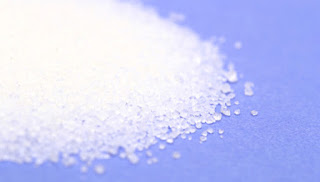History
The Center of Disease Control and Prevention (CDC) proclaimed community water fluoridation as one of 10 great public health achievements of the 20th century. In 1945, Grand Rapids, Michigan became the first city in the world to calibrate the level of fluoride in its water supply to prevent tooth decay. In 1951, water fluoridation became an official policy in the U.S. and by 2012, 67.1% of U.S. population were getting fluoridate water from community water system (CWS) at or higher than recommended level. Studies have shown that occurrence of cavity has dropped significantly due to fluoridation of our water system.
Risks and Benefits
The good:
- Regardless of method of fluoride exposure, it creates low level of fluoride ion in our saliva and plaque, which means its effect is topical (on the surface).
- Fluoride "prevent" dental decay by controlling the rate which cavities develops instead of actively removing bacteria/cavities.
- Fluoride ion forms a protective layer called fluorapatite which is:
- more acid resistant (acid makes our teeth "soft") than hydroxyapatite, part of original composition of our teeth
- forms quicker than remineralization of enamel - so our teeth "harden" faster
The bad:
- Fluorosis is the only adverse effect of fluoride at recommended level. Its symptoms ranges from discoloration of the tooth (white to brown) to pitting of enamel. For specific categorization of severity of fluorosis, please refer to Dean's Index.
 |
| Photographs of Dental Fluorosis by Dr. Hardy Limeback and Dr. Iain Pretty, et al. |
- The critical period of exposure is from age of 1-4 (when teeth are forming) with risks ending at age of 8.
American Dental Association (ADA) has a risk assessment for kids from age of 0-6, when a patient falls into the high risk group, fluoride treatment is highly recommended.
 |
| Image from ADA.org |
As you can see, fluoride exposure is only one of the assessments. If a patient has recommended fluoride exposure but still fall into high risk group, we will target treatment from other approach such as hygiene habit and diet.
What is the Safe Level?
According to ADA, the US Public Health Service's latest recommendation for optimal ratio of fluoride to water is 0.7 parts per million. You might wonder: how much is that? It is like 1 inch in 23 miles, 1 minute in 1000 days, or 1 cent in $14,000.
Fluoride is present naturally in water and food as well, so when considering safe level of fluoridation, we also have to look into diet, toothpaste/mouthwash, medical/dental supplement as well.
- FluorideAlert.org has a list of food containing fluoride and concentration of each item.
- To understand specific concentration of fluoride in dental products, please go to ADA.org
How to Avoid Fluoride in Water
Since not everyone reading this blog needs or agrees with fluoride supplement/treatment, I have included some ways to avoid fluoridated water:
- Filtration - fluoride can be filtered out of water by the following three methods: reverse osmosis, deionizers (which use ion-exchange resins), and activated alumina. Brita or Pur WILL NOT filter fluoride from water.
- Spring water - most spring water sold over the counter contains very little fluoride level. However, some brands do carry water with higher fluoride level than others. When in doubt, call the phone number on the labels, most companies will have the information available.
- Water distillation - water distillation will remove most, if not all, fluoride. There are water distillers that fit right on our counter top which will be more than enough for household usage.
This article is meant to be a quick and simplified explanation of fluoride and its association with cavity prevention. If you are interested in a more information on the science behind fluoridation, please visit ADA.org, Fluoridealert.org, CDC.gov. To find out the fluoride level in your water system, please contact your local water department.
